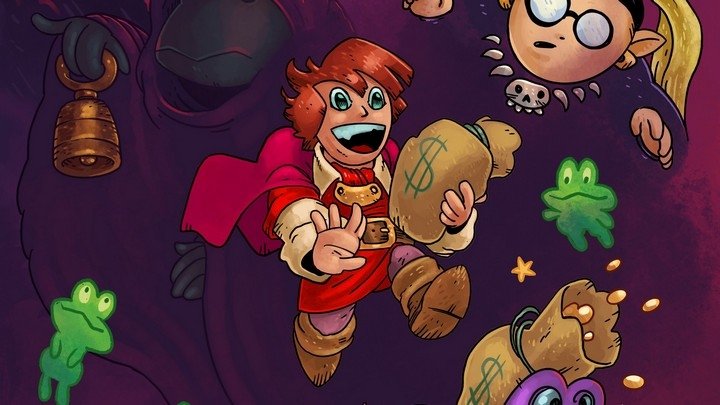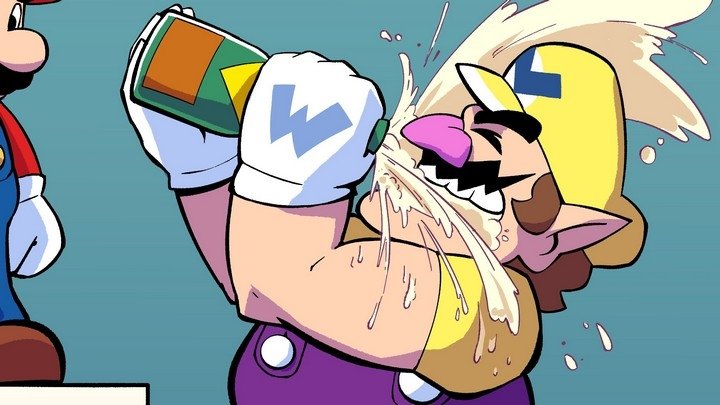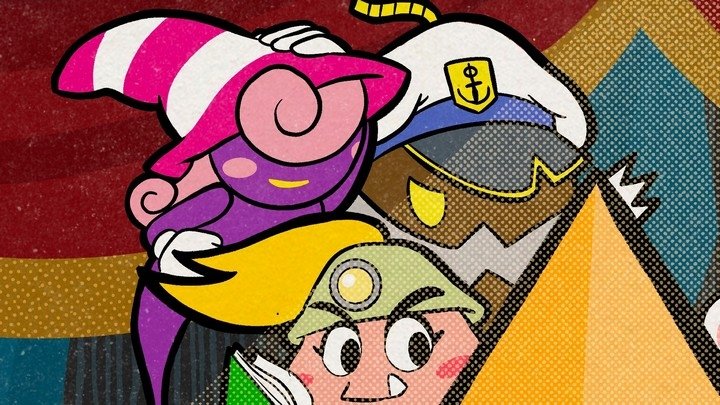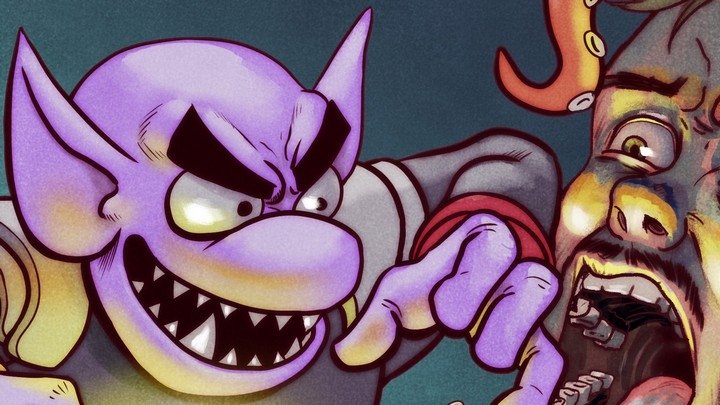Super NES Mini Countdown: #15 | Super Mario RPG
The game so eager to sell a genre that it put it in its name.
Nintendo's Super NES Classic Edition mini-console arrives at the end of the month, and the Retronauts writing team has voted to rank the 20 classic games on the mini. Unlike last year's Classic NES Edition, the Super NES mini doesn't have a single dud on it, so think of this as a countdown from good to great. While our last two entries saw Nintendo harnessing the game-making talent of the West, #15 is a collaboration with a fellow Japanese company whose star was fast ascending.
Previous entries:
- 20. Super Punch-Out!!
- 19. F-Zero
- 18. Kirby's Dream Course
- 17. Donkey Kong Country
- 16. Star Fox

15. Super Mario RPG: Legend of the Seven Stars
Dev.: Square
Publisher: Nintendo
Genre: RPG
Release date: Mar. 1996 [JP] May 1996 [U.S.]
What makes Super Mario RPG a worthy inclusion?
1. The mega powers explode
Square had become one of Nintendo's closest partners ever since it struck gold with the Final Fantasy series on the Famicom, but their cachet in the international market had been limited by the simple fact that their main business was RPGs. While the genre made the jump from the PC scene to the console mainstream with incredible success in Japan, it just couldn't seem to turn many heads out West. No one could say for sure why this was, but anyone could imagine all the money to be made if the proportionally huge sales of hits like Dragon Quest III could be repeated with much larger Western audiences.
With this goal in mind, both Square and Nintendo tried everything they could think of to make RPGs a big deal. Square released Final Fantasy Mystic Quest, a beginner RPG specifically designed to ease in the uninitiated, and Nintendo took it upon themselves to localize third-party RPGs and lavish them with extensive, months-long coverage in the pages of Nintendo Power. Late into the Super NES era, they put their heads together and devised an even better plan: to make an RPG starring Mario, who was highly recognizable the world over. While it wouldn't single-handedly put RPGs on the map (a task ultimately left to Final Fantasy VII), the result is an utterly unique combination of Nintendo's winsome appeal and the masterful game design of Square in their prime.

2. Superstar saga
Where a lesser developer might have settled to paint Mario-related imagery over a typical RPG template and relied on sheer star power to sell, Square worked from the ground up to craft an experience that would be both inviting to RPG novices and informed by Mario's background in platformers. But placing him in an action RPG similar to Secret of Mana would defeat the purpose of exposing new audiences to the turn-based trappings of the genre proper, so they instead thought about how best to apply Mario and his world to the traditional framework. This led them to create the "Timed Hits" system, where a carefully-timed button press during an attack animation will significantly increase the damage dealt (or decrease it if defending against an enemy's attack)—thus flavoring otherwise static battles with the engaging precision of an action game.
Jumping is a rare ability to find in most RPGs, but as the foremost verb in Mario's vocabulary, it figures prominently both in battle and in how the player navigates the game world, with many puzzles to solve and secrets to uncover by way of platforming. Items are found in a cross between standard-issue RPG treasure chests and Mario's question mark blocks, naturally opened with a jump from below. Some reward coins with repeated jumps, while others hold invincibility stars that allow Mario to instantly defeat enemies upon colliding with them on the field, racking up experience points without needing to enter a battle at all. "Super Mario RPG" is exactly what it says on the tin: an RPG, yes, but specifically a Mario RPG—and it would be from here that the subsequent Paper Mario and Mario & Luigi series would derive much of what that means.

3. The world is square
Throughout the '90s, Square parlayed their repeated successes with ever more ambitious projects, which in turn bore results of ever-increasing quality. It's telling that no third party is more represented on the Super NES Classic Edition (Capcom ties them with three games), as hardly anyone comes to mind sooner when thinking of the system's defining library. And SMRPG, as faithful an adaptation as it is, is also just one more example of a masterful developer operating at the top of their game. The game world is vast and full of intricately detailed locations, whose seemingly endless supply of side-quests, mini-games, and Easter eggs maintains a sense of curiosity and surprise throughout the adventure. The story unfolds as a series of bizarre vignettes portrayed by endearing characters, with a reassuring current of sincerity running beneath it all. Ted Woolsey, who localized Secret of Mana, Final Fantasy VI, and Chrono Trigger, enters some of his best work here, where his lively, comedic, and endlessly quotable dialogue feels more at home than ever before.
4. Fork in the Star Road
Coming as late as it did in the Super NES's life, SMRPG symbolizes not only the strength of Square and Nintendo's relationship but also its imminent demise—if only as a matter of proximity. While Square was working on this game, they would have also been hard at work on Final Fantasy VII, and soon afterward, they would famously jump ship to endow Sony's PlayStation with their most ambitious and best-selling title to date. They wouldn't return to Nintendo's fold for the better part of a decade, and even once they did, things would never be the same as when the two companies were nearly synonymous. SMRPG also marks the end of Ted Woolsey's tenure at Square and his career in localization in general. At the same time, it heralds the rise of Yoko Shimomura as an RPG composer. (She had previously composed for Live A Live and Front Mission, but this was her first Square game released outside Japan.) Following her illustrious start scoring action games for Capcom, she built up an impressive portfolio of Square RPGs, including Parasite Eve, Legend of Mana, and the Kingdom Hearts series. After going freelance, she also returned to create the sound of the Mario & Luigi series. Both paths, though diverged, started here—with the only Mario RPG that's also a Square RPG.

Interesting facts about Super Mario RPG
1. Lightning in a bottle, earthquake in a can
In addition to SMRPG's aforementioned inspirations to the Mario RPGs to follow, it's notable for establishing the personality of Mario's greatest foil: Bowser. Ousted from the antagonist role and enjoying the benefit of Square's writing, here we see him grow out of his generically evil persona and reveal an incorrigible dolt who fancies himself a warrior poet and refuses to swallow his pride even in his lowest moments (insisting Mario is joining his party when they finally join up). This portrayal would come to define the character in games where he has the room to pontificate—particularly Mario & Luigi 3: Bowser's Inside Story, where his over-the-top braggadocio takes center stage.
2. No strings to hold me down
Believe it or not, early Nintendo Power coverage of SMRPG claimed Mario would meet none other than Pinocchio during his quest. This presumably referred to Geno, a non-corporeal emissary from the Star Road who possesses a boy's action figure in order to carry out his mission. While he's not quite a puppet yearning to become a real boy, Geno is certainly one of SMRPG's most memorable original characters, fighting as he does with pellet guns and spring-loaded rocket punches.

3. Mr. Green
As a globetrotting RPG, SMRPG goes to great lengths to flesh out the Mushroom Kingdom and the world around it, yet one glaring omission from the setting is Luigi. Among the game's many secrets are a pair of unidentified NPCs hidden behind buildings, and some players were so desperate to know what happened to Mario's little brother that they concluded one or both of these figures was him. In fact, he finally shows up in the ending, leading the combination parade/curtain call that runs along the credits. He can also be found in the manual, commenting on aspects of the game and explaining that Mario "doesn't need my help this time." Lastly, about halfway through the game is Star Hill, an otherworldly place where you can listen to the wishes other people have made on stars. Most of them belong to characters you've met along the way, but one of them reads thus: "I wanna be a great plumber like my brother Mario." Aww.
4. Credit where it's due
Rare didn't work on SMRPG, but the game's pre-rendered aesthetic certainly owes to the pseudo-CG craze they kicked off with Donkey Kong Country. As a shout out to this, Square included a minor enemy named "Chained Kong" who's a dead ringer for DKC's Donkey Kong model. Luigi's role in the manual may also have been inspired by Cranky Kong's heckling in DKC's manual, although he's of course much more polite.

5. Classified information
The Japanese version of SMRPG includes a code in the form of an arcane button command, which, when input on the menu screen...causes Toad to appear and sarcastically bring up your stats to show that the "cheat" did nothing. Since this was removed from the American version, it went unbeknownst outside Japan for nearly twenty years before being shared by Clyde Mandelin of Legends of Localization.
6. Ultimate illusion
One of SMRPG's many obscure side-quests includes an encounter with Culex, a demonic figure who radically diverges from the game's art style with a superdeformed pixel art field sprite. Upon commencing the requisite super boss fight, he takes on a wispy, detailed, Amano-inspired appearance, and he's joined by the crystals of the four elements. The joke, of course, is that he's a pastiche of Final Fantasy visuals during the Super NES era, but the fact that he looks the part and battles you to the boss theme of Final Fantasy IV led to rumors that he was a character from FFIV or some other game in the series making a cameo. Even magazines of the time reported this, perhaps demonstrating how few people were actually playing RPGs at the time.




